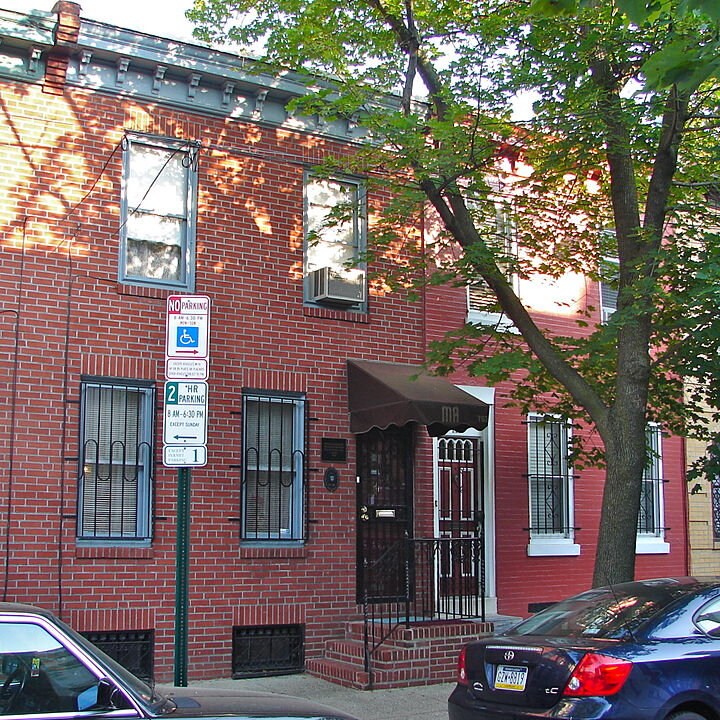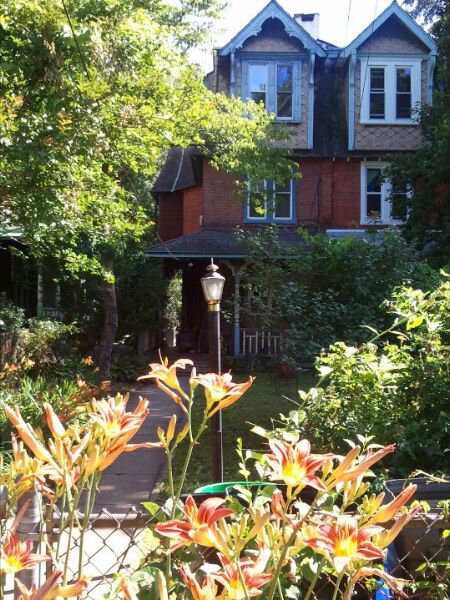During Black History Month we have been sharing, on social media, links and information on several local museums and historic sites. This is not at all an exhaustive list of the institutions in the Philadelphia area doing work to preserve and interpret Black history, but I wanted to capture the information from our posts in one place.
Marian Anderson Historical Society and Museum
Marian Anderson was born in Philadelphia and attended William Penn High School and South Philadelphia High School. During high school, Anderson took voice lessons with some of the most accomplished singers of the time while performing regularly with her church choir. Touring extensively throughout her twenties, Anderson had a solo show at Carnegie Hall at the age of 31, and entertained audiences throughout Europe. In 1939 Anderson was denied a venue in Washington, DC because she was Black. After popular uproar, Eleanor Roosevelt and Walter White of the NAACP worked to arrange a free outdoor concert in front of the Lincoln Memorial which cemented Anderson's place as an American icon. She would go on to receive honors including the American Medal of Freedom.
Marian Anderson performing in front of the Lincoln Memorial in 1939 (image courtesy of the University of Pennsylvania)
From 1924 to 1943, she lived at 762 Martin St in between her tours and for the last two decades the house has been a museum in her honor. In June last year, a burst pipe flooded the Marian Anderson Historical Society and Museum, causing significant damage to the South Philly historic site. Already hurting financially due to the COVID-19 pandemic, the Museum appealed to the press and has been somewhat successful in fundraising for repairs but still needs help.
The South Philadelphia house (now a museum) where Anderson lived from 1924 to 1943 (public domain).
Donate to the Museum's repairs: https://www.gofundme.com/f/kyjj43-support-for-marian-anderson-historical-society
Facebook: @NationalMarianAndersonMuseum
Instagram: @marianandersonhistoricsociety
Paul Robeson House
"Paul Robeson was one of the most interesting people of this last century," says Vernoca L. Michael in her video tour of the Paul Robeson House and Museum (PRHM), and that may be an understatement. A man of many talents, Robeson was a top athlete in college, earned a law degree, and then became one of the most sought-after actors and singers around the world. Like Marian Anderson, Robeson often performed African-American spirituals in the same repertoire with operatic pieces.
Paul Robeson in 1942 (public domain image)
At the height of his fame, his activism drew surveillance from J. Edgar Hoover's FBI, a summons from the House Un-American Activities Committee, and ultimately blacklisting in America and a revoked passport. This censure for his civil rights activism and suspected Communist sympathies effectively cut short his career. He spent the last ten years of his life in his sister's West Philadelphia home, which is now the PRHM.
Photo of the Paul Robeson House courtesy of the museum.
The Museum is operated by the West Philadelphia Cultural Alliance, which works to “stimulate community participation in the arts by cultivating an interest in, understanding of, and appreciation for the arts in the greater Philadelphia region.”
Facebook: @paulrobesonhousemuseum
Instagram: @paulrobeson_
Website: https://www.paulrobesonhouse.org/
Photo of the Dox Thrash House by Starr Herr-Cardillo for HiddenCity
Dox Thrash House
Dox Thrash was a prominent printmaker who spent much of his adult life in Philadelphia. Thrash worked for the Works Progress Administration's Federal Art Project, during which time he was one of the developers of the carborundum mezzotint printing method. Thrash's depictions of African-American life drew praise from figures such as Alain Locke and he was involved in many of the centers of Black cultural life in Philadelphia such as the Pyramid Club.
Thrash lived at 2340 Cecil B. Moore Avenue, and while the house was listed to the Philadelphia Register of Historic Places in 2013, the building has still been endangered. A campaign to save the house and turn it into a museum and community space passed its first hurdle last year, securing funding to purchase the property. The next task is to stabilize the building.
"Ship Fitters," print by Dox Thrash, in the collection of the Illinois State Museum
Facebook: @doxthrash.house
Instagram: @dox.thrash
The Colored Girls Museum
"The Colored Girls Museum is a memoir museum, which honors the stories, experiences, and history of ordinary Colored Girls." So begins the About page of The Colored Girls Museum, which is located in Germantown. Beginning as Fringe Festival pieces in 2014 and 2015, the Museum is the brainchild of Vashti Dubois. Past activities have included a variety of multimedia exhibits and programs. The pandemic has curtailed the Museum's activities, but they have been doing some Instagram Live discussions and developing items for sale--including sweatshirts, mugs, and a coloring book. Give them a follow on social media to be the first to know when they reopen!
Facebook: @TCGMuseum
Instagram: @thecoloredgirlsmuseum
Website: http://thecoloredgirlsmuseum.com/
Lest We Forget Museum of Slavery
Wrapping up our list is the Lest We Forget Museum of Slavery. Located in Germantown, the museum holds the extensive collections of J. Justin & Gwen Ragsdale. Ranging from artifacts of enslavement to racist caricatures from the Jim Crow era, the museum seeks to "shed light on a dark and tragic period in American history and pays tribute to the generations of slave ancestors who greatly contributed to the building of America." The museum also operates a traveling exhibit which visits schools and a variety of events.
Facebook: Lest We Forget Slavery Museum
Instagram: @lwfmuseum_
Website: https://lwfsm.com/







